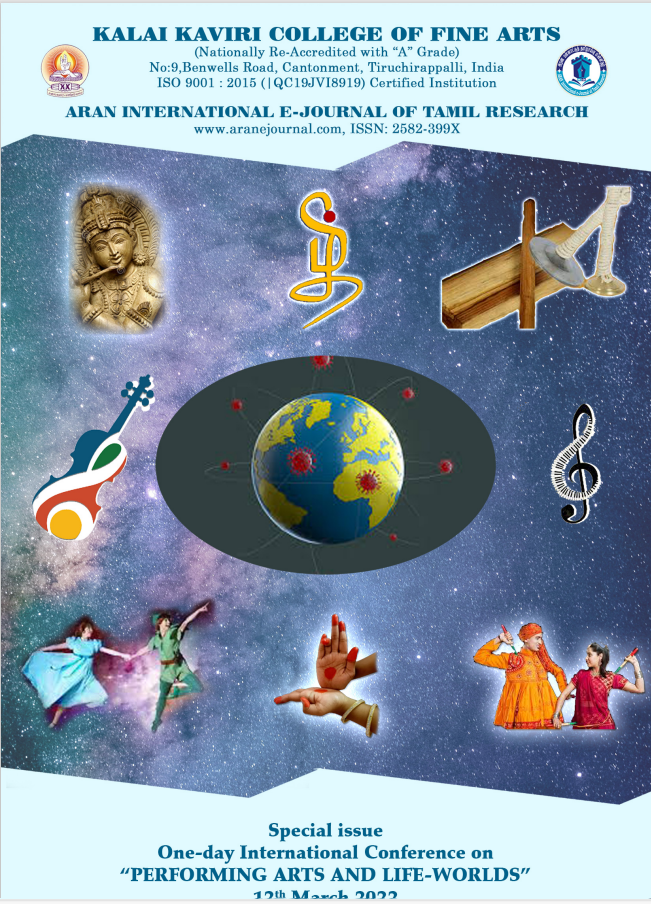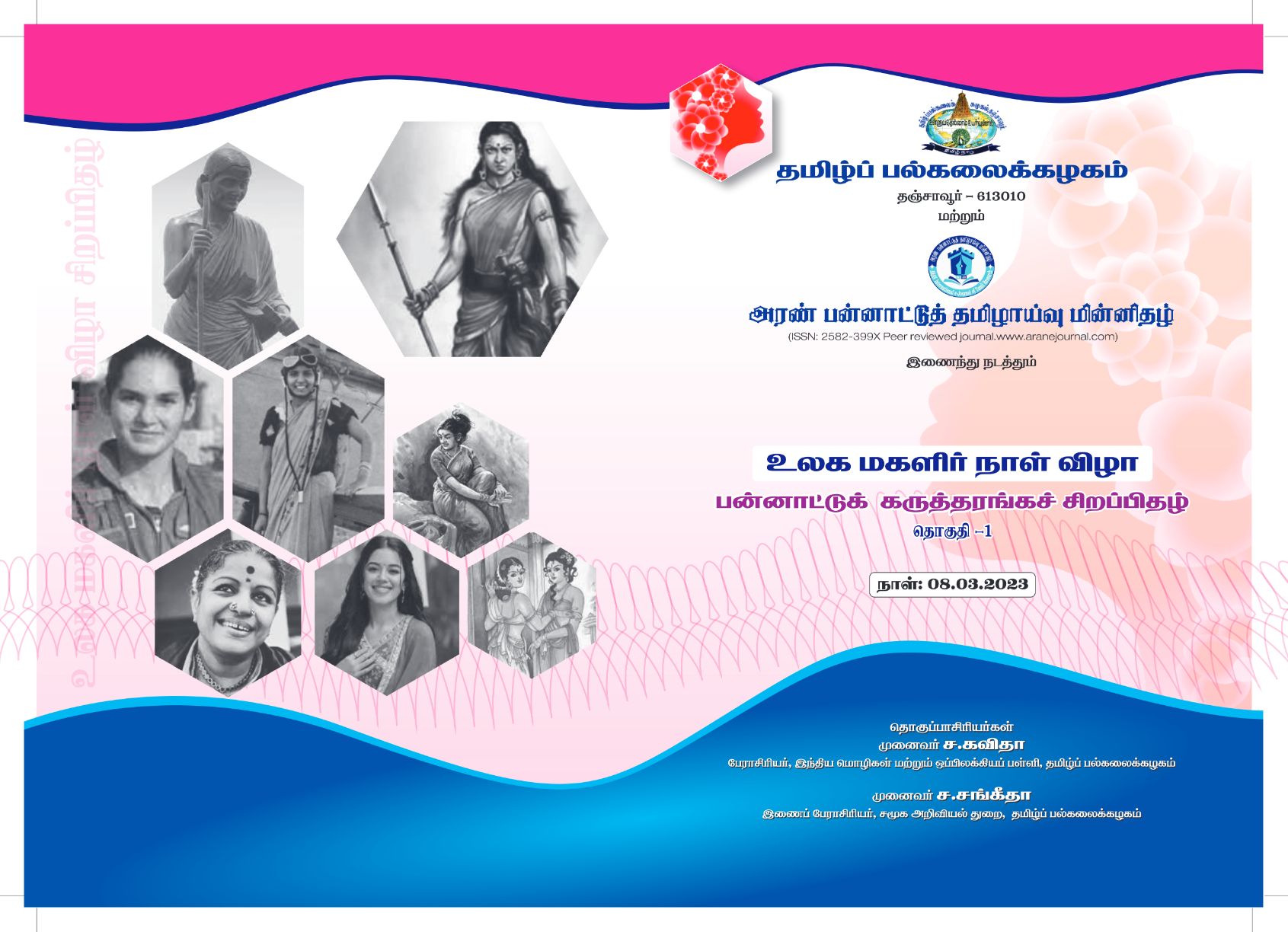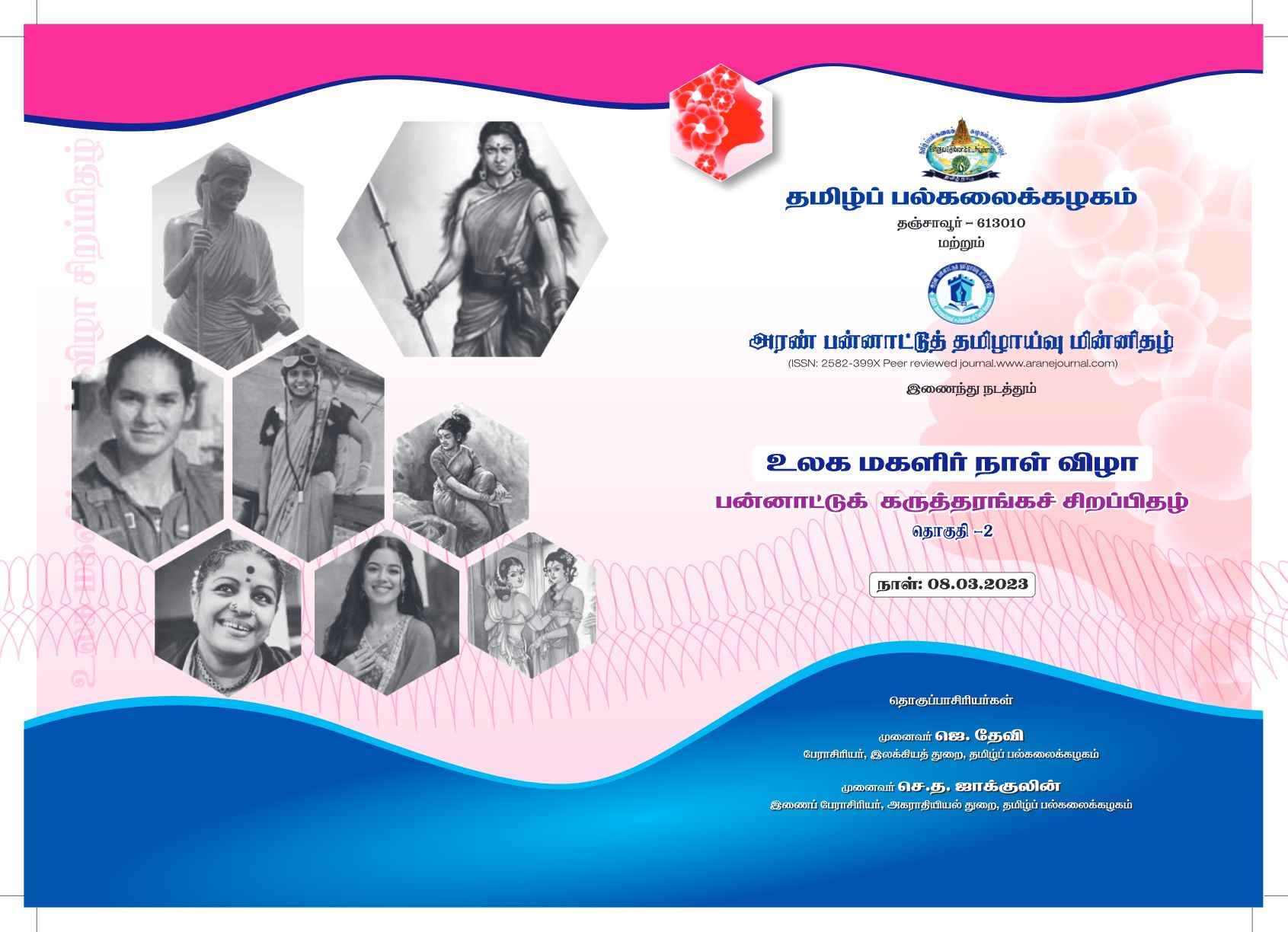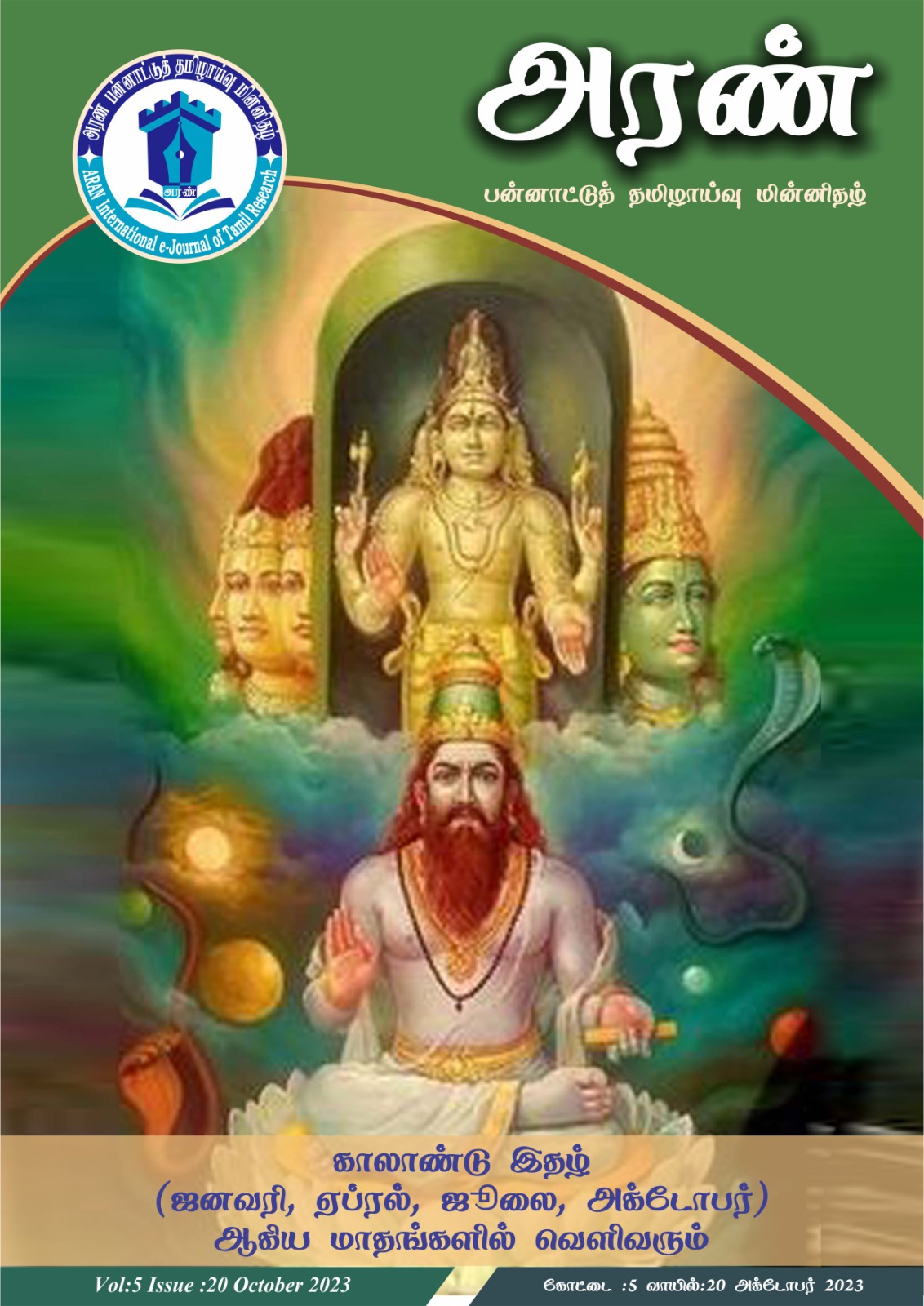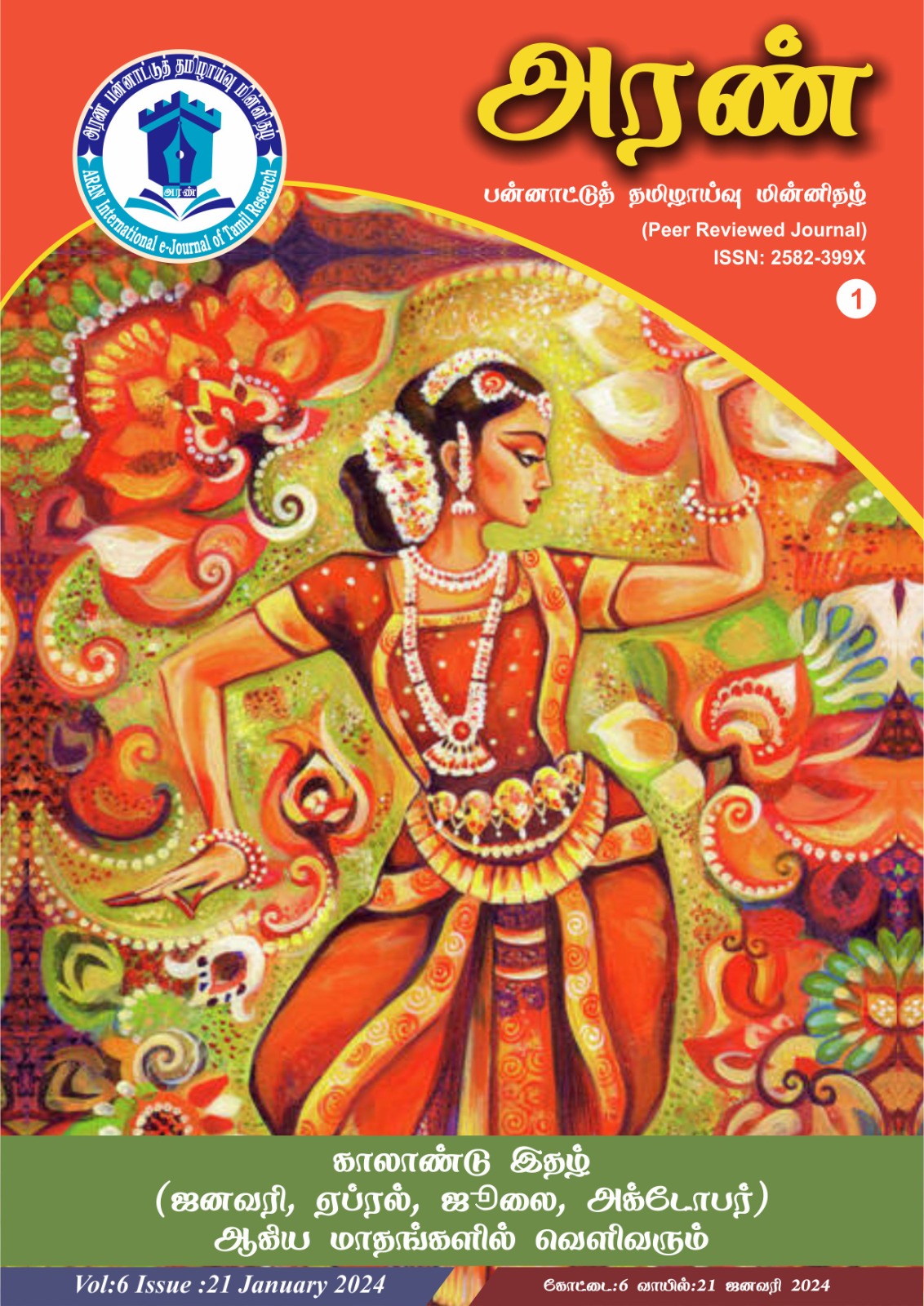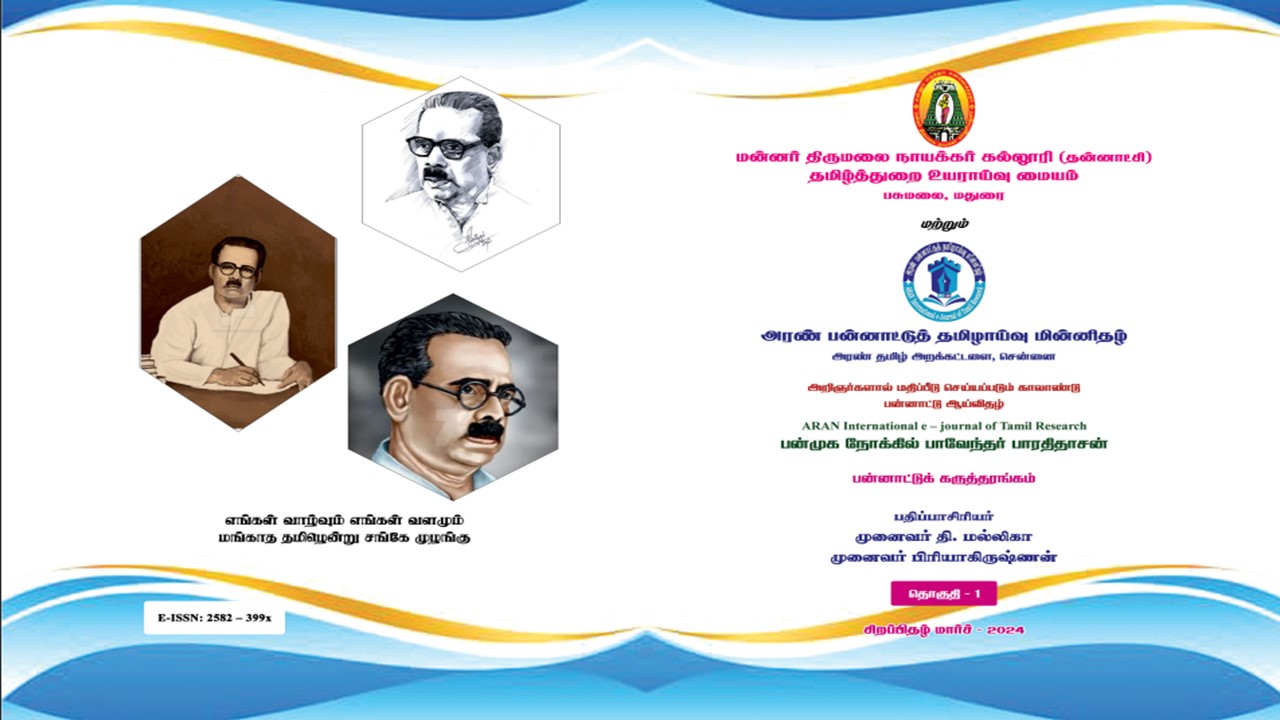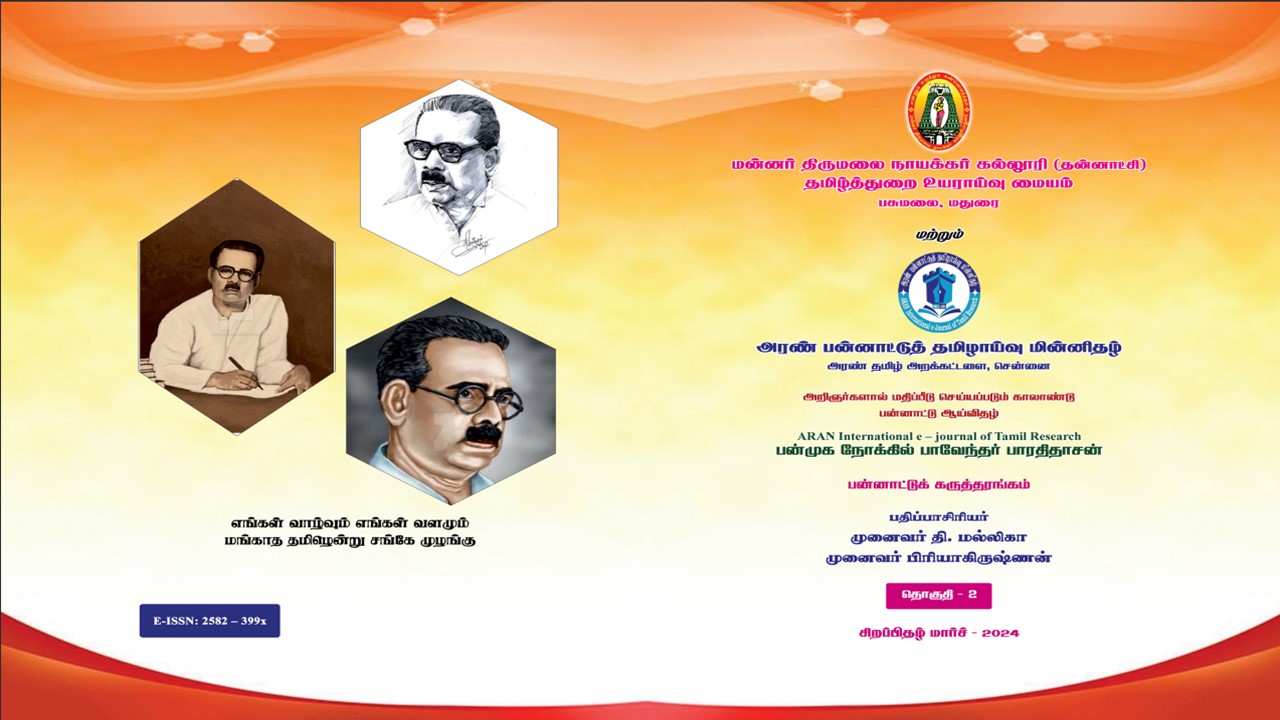Koothapperuman
Author: P. Selvi, PhD Analyst, Department of Saiva Siddhanta, University of Chennai, Chennai.
Guide: Dr.S.Saravanan, Professor, Department of Saiva Siddhanta, University of Chennai, Chennai.
Abstract:
Worship is a form of worship in which one is worshiped according to one's worth, love and power. They seek the grace of the Lord by continuing to worship. By His grace they are further elevated in spirituality and strive to attain the state of righteousness. The saints, benefactors and sages who came for us in this world have shown us this way.
Worship can be classified into four categories as sariya, kriya, yoga and enlightenment. These are closely related to each other, with buds, flowers, berries, and fruits enhancing each other.
Sariya is material worship, which is done by the body. Kiriya is the abominable worship of Sukuma. This is done in conjunction with the mature mind, the subtle, and the external body. Yoga is a subtle form of worship. This can only be done by the mind.
According to the Sikhs, the original deity is Shivalingam. All the myths, which are based on mythology and are considered to be worthy of worship, originated from the lingam. Sixty-four forms that originated from the lingam. These are said to be the Ashtashta idols in Agam. Twenty-five summarized these forms and stated that the cause is concrete. One of them is Koothapperuman. This study is meant to examine the screw of Koothapperuman.
Keywords: -
Sandhya Thandavar, Sadaniruttar, Chanda Thandavar, Iyavul World Movement, Aintholi, Chidambaram, Thirukuttu, Gnana dance, Birth dance.
Preface: -
In the vegan tradition, the complete form of the god Shiva is traced back to AD. The tradition of sculpting has been strong in South India since the 5th century. The dance form of Lord Shiva has been a part of the South Indian tradition and history and mythology from then until today. The oldest dance sculpture of Lord Shiva in India is located in the Ravanappadi Cave in Aihole, in the Bagalkot district of Karnataka. And then in Orissa. The statue of Koothapperuman grew in popularity in Tamil Nadu and Andhra Pradesh.
Explaining the Kootha Peruman worship and its philosophy of the Tamil community through Tamil literature and Saiva literatures, thereby understanding the development of the vegan religious structure, clarifying the ideologies of the Koothu Perumaan way of worshiping God during the Vedic period. The study aims at shooting clarity.
Sixty-four Shiva forms: -
Casey Sage has authored a book, Ashtashta Idol Leela, in the North. The book is presented as ‘Ashtashta Murtham’ and ‘Shiva Parakramam’. This signifies that Lord Shiva bestowed grace on the servant with 64 portraits. Ekkadu Rathinavelu Mudaliar, in his book ‘Sivaparakramam’ published in 1908, has given paintings and references to these twenty-four Shiva forms. Twenty-four of these twenty-four are special. The Agams say that these appeared in five to twenty-five forms, each in the form of Maheswara, the Satan form of Eesanam, Tatpurudam, Agoram, Vamadeva and Satyosadam. ‘Sivaparakramam’ refers to the four Shiva forms.
1.) Evening dance form (Sandhya Thandava Murthy).
2.) The ever-dancing form (Sadanirutha Murthy).
3.) Kalikana Aadiya Dance Form (Chandatandava Murthy)
Three Koothapperuman (Nataraja Moorthas).
Associated with.
Origin of Sandhya Thandava Murthy: -
Sandhya Thandava Murthy is a form of dance that can be seen near Ambika. The Lord saved the world with the poison that appeared when the Milky Way crossed. The deadly poison did nothing for her though he pretended to be a little tired and leaned back to rest. Then the gods praised the Lord. That night Ekadasi, the next day, the Lord danced for a while. That is the time of joy. The one who is in that dance form is the Sandhyatandava Murthy.
Sadanirutha Murthy: -
The form of Sadanirutha Murthy is the one who presents the creation with the hand that wears, the love with the hand of danger, the destruction with the hand with the ax, and the grace with the golden foot which is hidden by the Thiruvadi placed on the rabbit. The Lord appears with Lord Panchacharat to see Ambika with him.
Origin of Chanda Thandava Murthy: -
The form of the fighting Thandava Murthy is the image of the Lord taking the hose that fell from his ear as he danced and wearing it on his ear again. Fight dance is a dance performed at a rapid pace to subdue Kali's insertion. The Lord dances from near Kali to illustrate it. The scene itself is a fight scene. Of the 64 Shiva forms, all three are associated with Shiva Koothu.
Industry Crossings: -
Great transcendentals in the universe
Is performing. Thandavangal
That it is performed towards lives,
The sins of lives by transgressions
The Shiva Purana also states that it will be destroyed.
The five professions of creation, protection, blessing, concealment and destruction are going on in Shiva's dance.
Although many reasons have been given for the existence of the universe, the theory of the Big Bang Theory is generally accepted.
These universes are said to be scatterings caused by a sudden eruption, which will weaken and disappear after a certain period of time, and the destroyed ones will reappear some time later to form this universe.
Sir Jacob F. Stephen, Carl Sagan, Bridjo, Pogbra and many other scientists claim that the dances of Lord Shiva express this cosmic origin and destructive nature.
The dance of Lord Shiva is the movement of the universe is the wisdom of the Siddhas. In the beginning there was only infinite space. The Lord said to create grace. At the thought, the thought appeared as a white light and paralyzed the woman. The Lord gradually created the arts through her. Then he started dancing with the portrait. Koothapperuman is that dance form.
The genealogy that created the universe also gave birth to Chidambaram as its heart gift. As it is, the universe he created as a transcendent began to run through the industries.
The universe was created when those five industries were played out.
That transcendence is what saved the universe
That transcendence also obscured the illusions of the universe
That transcendence is what gave the universe life.
That transgression destroyed the universe he created. (6)
Thus the Lord performed all the five occupations of creation, protection, destruction, concealment and blessing through transcendence and performed all those occupations in a single dance at Chidambaram. The solo dance he performed is said to be the transcendent of the universe. This form of cosmic transcendence is worshiped as blissful transcendence on all levels.
In this joyous dance performed in Chidambaram, there is Kalika Thandavam which belongs to the creative profession and Sandhya Thandavam which belongs to the love profession. There is a Tripura transcendence for the concealment industry. There is a graceful transcendental transcendental transcendence. There is also the destructive transcendence of Sankara. That monotheism with the five industries is the transcendence of the universe.
Legend has it that Koothapperuman, who danced at Chidambaram, performed these five rituals separately from the Lord.
Kalika Thandavam for creation in Tirunelveli and Kali Thandavam for love in Tirupati (also known as Sandhya Thandavam in Madurai). Thillai is said to have played the hide-and-seek Tripura dance in Courtallam and the auspicious Urdhuva dance in Thiruvalankadu and the Sankara dance in all the cemeteries at midnight, after which the five professions danced together.
The place and purpose of the screw.
Lord Shiva is enshrined in the Sivapanchakra called ‘Sivaya Nama’ and sits on his Thiruvati and dances so that he can be born, which is the cause of the misery of life.
Ambalavanan Thirumeni in the alphabet: -
Thiruvadi is ‘n’ spicy
The abdomen is ‘m’ spicy
The upper bouts featured two cutaways, for easier access to the higher frets
The Blessed One who inspired the Scriptures ‘Come’
Is spicy. Mrs. ‘Ya’ will be spicy.
This is also Ambalavanan Thirumeni
The ‘C’ alkali is located on the right hand of the wearer. The graceful ‘va’ karam is located on the left thirukkara which shows the curved left thiruvati. The alarm will be displayed as 'mail'. The illuminated ‘ya’ alkali is located on the right hand side.
The ‘N’ base is located on the left screw carried by Agni.
The rabbit is pressed and fitted
The ‘m’ base is located on the right leg.
The five-letter mantra of Ambalavanan
Realizing all five professions.
1. Udukki-carrying screw - Creation - c
2. Lifted Thiruvati
Pointing screw - grace - w
3. Set screw - love - y
4. Thermal-carrying screw - destruction - n
5. Seated Thiruvadi - Concealment - h
Pranavathul Thirukuttu System: -
The Pranava ‘Om’ is the Thiruvasi that surrounds the form of Ambalavana. Its inner full light is the fear that does not leave it in accordance with the pranayama.
The one who removes the insert 'Yan is mine' knows that Pranav.
Knowing this, the beautiful Tiruchirambala is the one who worships the Thirukkuttai. He is the one who has the ability to come here again and reborn.
The mantra ‘Om’ is composed of the five meanings of Natam, Vindu, Agaram, Ugaram and Makaram. Natham refers to Satasivana, Vindu Maheswaran, Agaram Ayan, Ugaram Mala and Makaram Uruthira. So Onkara also realizes the five industries.
The mantra of ‘Om’ and the mantra of ‘Sivaya Nama’ are one in meaning. Therefore, the input (inner light) of ‘Om’ is ‘Sivayanama’. Onkaram (outer) world movement Panchacharam. Sivachaya is the Panchacharam that directs our (internal) life.
Thiruvasi resembles the ‘Om’ system. Therefore, the form of Ambalavanan, which is the interior of Thiruvasi, is also displayed as an alphabet.
Conclusion: -
In order to achieve the record in vegetarianism the cow must remove the affection. Only by removing the affection can the cow soul reach the Lord who is the Savior. Koothapperuman performs enlightenment dance in order for the souls to reach home in order to get rid of affection. Eliminates the triads of arrogance, greed and delusion. The wear screw carries out the job of removing the sludge. The flammable screw does the job of firing the gemstone. The seated Thiruvadi does the job of soothing the anus. The lifted Thiruvadi does the work of bliss and grace. The set screw does the job of squeezing the soul into bliss.
Koothapperuman is creating his own lord. Thiruvaintheluttaiye aruttiru mania is playing with. His mother blesses him to see his screw. There is no rebirth for the worshiper who realizes this desire and wants to.
Footnotes: -
1. Sivamurti- 64
Page-107
Above 113-118
2. Mother of Karaikal
Arupathathiruvanththe P (31)
3. Thirumular Thirumandram P (32)
4. Turn.
5. Upper Thevaram.
6. Shiva dance in the atom b (51-52)
7. Interpretation of Truth (31-34)
View Texts: -
1. Tellaru E. Mani, Shiva Murthys-64
Shankar Publishing, Chennai.
2. S. Subbulakshmi Mohan, Mother of Karaikal.
A Study of Songs, World Tamil Research Institute, Chennai.
3. CS Murugesan, Some Dance in the Atom, Shankar Publishing, Chennai.
4. N. Ramakrishnan, Sivananda Thoughts of Thirumoolar, Manivasakkar Publishing House, Chennai.

